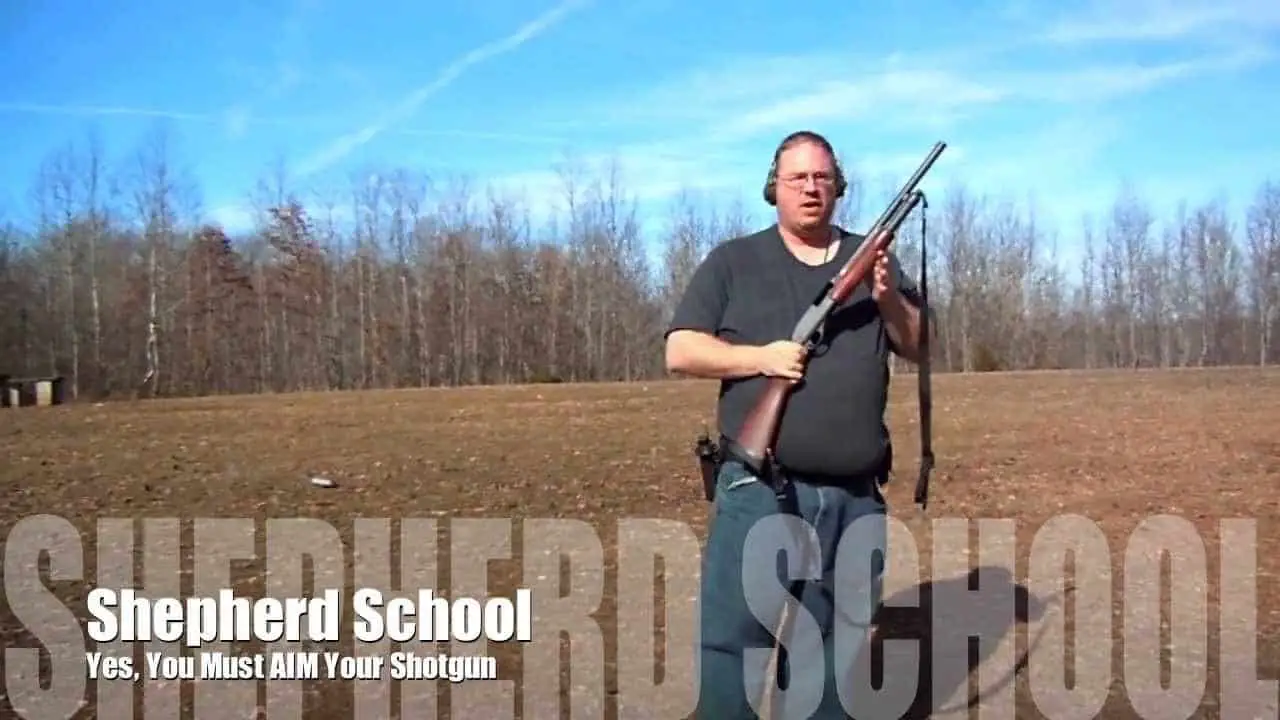
Besides butchering rabbits on YouTube, I am a killer of sacred cows. One thing I hate is to hear a mall ninja prattle on about how he loves him some shotgun. They love to say that all he has to do is point down the hall and kill anything coming down it.
I hate to tell you, just because it’s a shotgun doesn’t mean you don’t have to aim it…
Let me break it to you… You have to aim shotguns
I was first exposed to the following concept of spread by listening to Massad Ayoob talk about “rule of six”. Try as I might I cannot find that link or I would add it here. However, what I did find were several forensic studies talking about shotgun spread over distance. While I am not going to reproduce it her, I will invite you to look at this Google scanned book The use of statistics in Forensics to read for yourself the math that goes into what I am telling you.
I have to apologize in advance for the video that supports this article. I choose 7 ¾ shot for the exercise because it gives a better overall view of spread than buckshot – more pellets give more data, but the small holes did not show up as well as I would have liked on camera – a fact I did not notice until I was editing the video – it showed up well on the butcher paper at the range. Also wind was barely noticeable on the range, but it made an unspeakable roar on the camera – once again not noticed until I was editing.
We Show Spread at Different Ranges
Here is what we did, we fired a 12 gauge shotgun at approximately 6, 12, and 18 feet from an 18.5 inch improved cylinder choked 12 gauge Remington 870 to demonstrate the concept of shot spread.
As the shot leaves the bore it exits the muzzle in a concentrated mass – wadding included – so at around 6 feet the shot impacts on the target much like a slug. The result is that the shot and wadding mass will produce a single large hole in a target. If the target is a living being, the wadding material will be blown into the wound tract with the pellets.
At distances more than about 10 feet the shot mass starts to break apart – you will get individual pellet holes (called flyers) around the edges and you will see a wadding hole on a paper target. If the target is a person, the wadding may or may not enter the wound. A little farther and the wad will take on more of a different trajectory as it gives up its energy sooner because of its lighter weight, and may leave a bruise until about 15 feet. The wad will fall to the ground after about 20 feet.
As you move farther the pellets will spread farther apart so that at 12 feet you start to see individual pellet holes, and by 18 feet you see a large spread that covers a B-6 target.
Pick the Best Tool for the Job
With a shotgun you have to make trades, rounds are much heavier than pistol or center-fire ammunition, and while a shotgun leaves a devastating wound at close range – shot loses energy very quickly because of light weight and at 30 feet of so may make a very ugly and bloody would, it may not incapacitate what you are shooting at.
What I would suggest to you if you plan on using a shotgun for home or other personal defense, is that you measure the distance you think you may be called upon to fire. Then, go to the range, and set up a witness board. Turkey hunters call them pattern boards. Shoot and see what your shotgun can do at the range you plan on employing it.
Butcher paper stapled to a target frame works well for seeing the spread of the rounds. However, it may not show you penetrative power. I would suggest you use some Sheetrock at the farther distances to get a better indication of the terminal energy of shot.
Conclusion
Finally, you also need to be aware shot patterns can be affected by the load, pellet size, wad type, and choke of the shotgun. That’s why I keep saying approximate. Your shotgun may not perform exactly like mine. Regardless of brand, barrel, ammunition, or skill – you have to aim shotguns if you want to hit anything.
